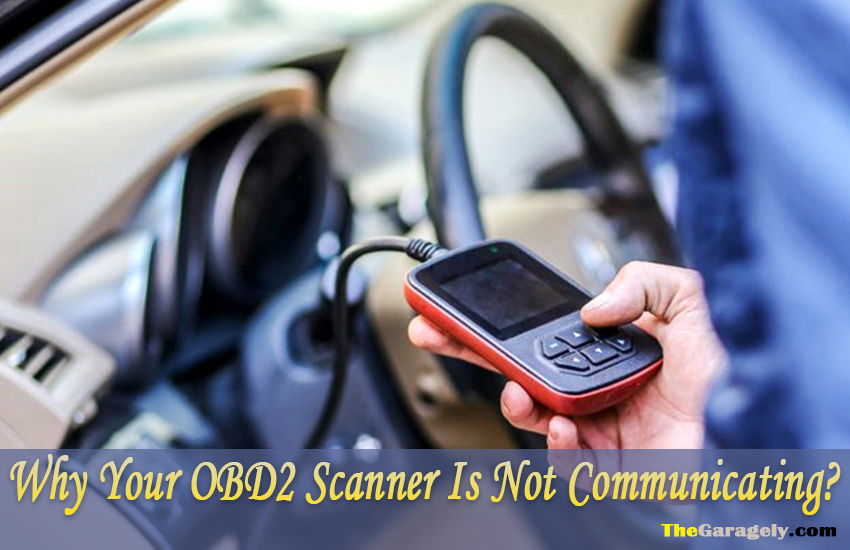
If you have an OBD2 scanner, you need it to work! You need it to communicate what’s going on in the car, because if it is not, what is its purpose?
An OBD2 scanner is a magnificent diagnostic tool. When you turn it on, you need it to check on the health of various systems of your vehicle. But at times, you will get a “No-communication” error. Why could this be?
There are various reasons why this could be happening. In this article, we will look at the five common reasons for the lack of communication in your scanner. We will also give you possible solutions to these issues.
Quick Navigation
Top reasons why your OBD2 scanner is not communicating
Compatibility issues
OBD2 scanners have standard protocols on which they run. For example, some Ford scan tools are only compatible with SAE J1850 VPW and PWM and Ford MS-CAN protocols. For them to communicate with a car, the car should be able to support these protocols. Different car manufacturers use different protocols depending on the region or make of the car.
However, some vehicles have non-standardized protocols, e.g., MUTT, OBD1. This then means that OBD2 scanners will not read these car details as they do not support these protocols.
Solution
If the compatibility issue is a result of outdated software, check the scanner to see if it can be updated to a version that supports your vehicle protocols. If the issue is that your car manufacturer installed specific protocols to read PIDs, you will need to buy a scan tool that can diagnose your car.
Ignition Key not placed in the Run position
For most OBD2 scan tools to run successfully, they need the ignition key to be in the run position. Others require the engine to be running for the OBD2 tool to communicate properly with all vehicle systems.
Solution
A good practice to have is to start your vehicle before you can initiate diagnostics. Make sure that all the modules shown on your dashboard are fully running and the car is on, then run the scanner.
Voltage issues in the OBD2 connector
All OBD2 scan tools are set up in a specific way to be able to access power. They run on 12-v power that’s on pin 16 with the ground on the 4th and 5th pin. This is specific to all OBD2 scan tools. As stated earlier, the ignition key should be placed in a run position for power to run through the scan tool.
However, there will be communication issues if power is not running through the scan tool.
Solution
To check if there are voltage problems in the scanner:
First, use a voltmeter to measure DC. Place the negative lead on pin 16 and the negative on either pin 4 or 5. Check to see if it is reading 12-v. If it has a voltage reading to it, but it’s below 11, this shows that there are charging issues. You should check to see if there is an issue with the battery or charging system.
If, after reading for voltage, none was picked up, there is most likely a blown fuse. With the guidance of a technician, check the fuse panel for any blown fuse and replace it.
ECM Hung
An ECM is a small circuit board in your car with software that tells the car how to run. It controls a large number of sensors from fuel, the AC, etc., in a car to make sure the care is operating at maximum. As such, it can tire.
Although rare, the ECM (engine control module) can hang. Your car can be on but is unable to establish communication with the ECU. In such a case, the OBD2 scanner will also be unable to communicate properly.
Solution
To solve this, you need to reboot the ECM. It’s a simple procedure, as shown below, so do not worry.
Step 1: Disconnect both battery leads.
Step 2: Step on the battery pedal. It is done to discharge all capacitors available.
Step 3: Once you reconnect the battery, the ECU should be up and running efficiently and proper communication established.
Before starting this procedure, it is important to consult a technician or the vehicle manual to know if there is anything specific to look out for.
Miscommunication
This is a case of reading the wrong data!
Most scan tools work after they have established a link with a particular vehicle. They do this by getting car PIDs (Parameter IDs). While establishing a communication with a car, this scan tool will automatically assume that it is in the last vehicle it had been used in. However, this may not always be the case.
And while the scan tool is evaluating data, it can miss some PIDs because it is trying to communicate with the wrong vehicle.
Solution
This is an easy fix.
Immediately you install the scan tool, scan for PIDs so that your tool can be up-to-date with the information of the vehicle you are using. The query process takes about a minute, but this is dependent on the vehicle.
Most OBD2 scan tools automatically scan for vehicle PIDs. But in case this is not the case, do it manually. Some scan tools rely on a vehicle’s VIN to determine the validity of its PIDs.
Conclusion
Just like any other system in the car, the OBD2 scanner, too, will have its issue. Ironic since its work is to diagnose the vehicle. However, communication issues for your scanner are not common, and they are also not difficult to fix.
Besides, You need to check on scanner software to establish whether there are updates available that would make it work more efficiently for your vehicle and others. If you are not sure how to check on communication issues, always call a trusted technician, or refer to its user manual, and you should be sorted.
Leave a Reply